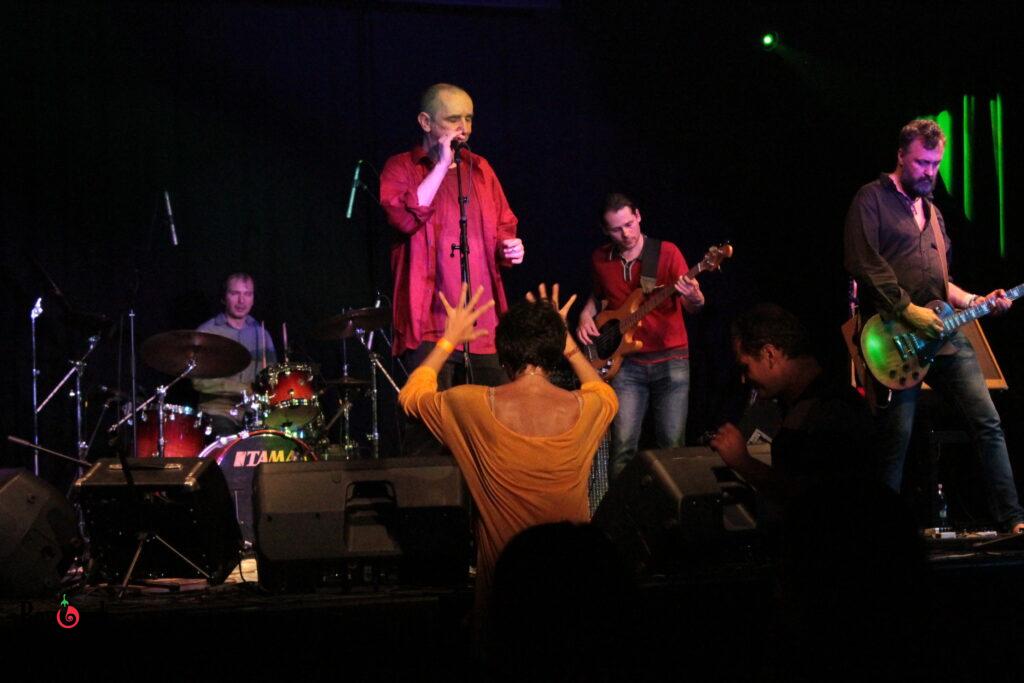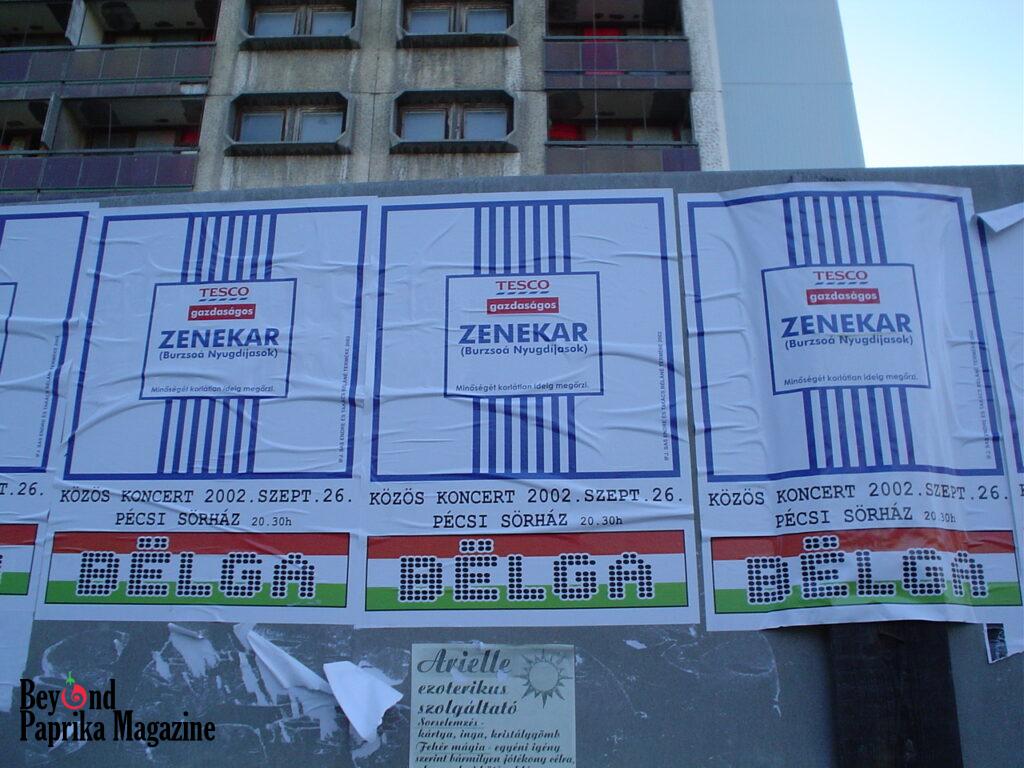When I think about what kind of cultural programs I could recommend on this site, I quickly run into a few problems.
The first comes from our language. Hungarian is entirely unique – no one outside of Hungarians understands it, not even partially. Even our closest linguistic relatives are far more distant than the dialectal differences of the surrounding Slavic peoples.
When I was a teenager in London, I could sit in a theatre and watch a play. Of course, I didn’t understand everything, but it was enjoyable and followable. With a Hungarian theatre performance, however, if you don’t speak the language, it’s simply impossible to recommend – you wouldn’t understand a thing.
Occasionally you might find a Hungarian movie screened with English subtitles, but honestly, I can’t recall seeing that very often.
So literature and theatre are hard to export. That leaves music – the most universal language, like mathematics, connecting cultures across the world. A classical concert at the Liszt Academy or at the Palace of Arts (MÜPA) in Budapest is an experience everyone can appreciate. But classical music isn’t uniquely Hungarian. To really sense the local spirit, you need to dive into Hungarian popular music.
Lyrics at the core
Hungarian popular music is, perhaps more than anywhere else in Central and Eastern Europe, extremely text-centered. Very often the music itself is just a frame, a disguise for what the artist truly wants to say.
This comes from history: for centuries, this region has rarely known true independence. Among Hungarians, the longing for freedom has always searched for cracks where it could break through. Writers and poets were often silenced, sometimes only allowed to write children’s poetry. But an artist cannot be locked in a cage – and so entire generations grew up with “children’s poems” that, when revisited as adults, revealed deeper layers and new meanings.
The voice of rebellion
Popular music became the natural vehicle of rebellion, especially for young people. Rock music, by nature, is nonconformist – and under a dictatorship it became a natural enemy. Authorities, of course, understood the hidden meanings and censored musicians and bands just as they did writers.
That’s why the term “underground” in Hungary means something different from what it means in the West. In the 1980s it signified an entire artistic and musical revolution. Bands were often not allowed to release records; sometimes their concerts were outright illegal. Their songs circulated on cassette tapes, copied on reel-to-reel recorders in terrible quality – but unstoppable.
This was the era of bands like Kontroll Csoport, Európa Kiadó, A.E. Bizottság, and Neurotic. Musically, they drew from punk, blues, and jazz, while the lyrics carried layers of meaning that went far beyond love songs. The Hungarian language, surprisingly, also lends itself well to rap-like rhythms, so you can find early traces of spoken-word and rap inserts in these underground recordings.

But Hungarian underground music was never cheerful. As I write this, I’m listening to a playlist of American and British hits – most of them sunny, hopeful, upbeat. You’ll hardly ever find a Hungarian hit that isn’t touched by sadness or hopelessness. For us, life always comes with a certain kind of dying inside.
After the fall of communism
When democracy arrived in the early 1990s, Hungarian music went into crisis. Those who had been fighting for freedom suddenly got it – and it would have looked odd to keep demanding it. Many bands burned out in this strange situation. The common enemy was gone, and it took years to realize that democracy, too, could be criticized and questioned. By then, the music scene had changed drastically.
With the rise of private radio stations, commercial pop acts emerged in large numbers, many of them of little artistic value. Rock continued quietly in the background but had a hard time staying in the mainstream. By the mid-1990s, however, new alternative bands started to appear, often drawing inspiration from the underground tradition.

This was the age of Kispál és a Borz, Quimby, Heaven Street Seven, but also Tankcsapda and the Pál Utcai Fiúk. Their music was usually simple guitar-based rock, but their lyrics were elusive, full of hidden meanings and references. If you grew up here, you understood them. If not, you probably never will – it wasn’t international, it was deeply local.
The 2000s and beyond
In the mid-2000s, a short-lived system of cultural funding gave clubs and festivals new support. For a while, underground and alternative bands became part of the mainstream.
But this scene never really managed to export itself abroad. Some bands tour Western Europe every year, but most of the audience there consists of Hungarians living in the diaspora. These are community tours, not global breakthroughs.
Today, however, a new generation seems ready to cross borders. Bands like Carson Coma, Platon Karataev, or Analog Balaton play music that is rooted in Hungarian traditions but also resonates with international audiences. It would do Hungarian music a world of good to finally take its place on the broader European scene.
Where to hear live music in Budapest
That’s why it’s hard to recommend one single band or program. Instead, I can tell you where I like to go when I want to hear live music in Budapest.
The city has a strong tradition of club culture. Every 10–15 years it changes, but it always reinvents itself.
- Gödör Klub (Király Street) – basement venue, usually featuring alternative acts.
- Dürer Kert (on the Buda side, by the Danube) – a legendary riverside venue with indoor and outdoor stages, especially great in summer.
- Budapest Park – the biggest open-air venue, festival-like atmosphere all summer.
- Kobuci Kert (Óbuda) – already active in the 1980s and still alive today; classic underground bands like Balaton and Európa Kiadó traditionally play their end-of-summer concerts here.
In closing
Hungarian popular music is rarely cheerful, but it is always honest. That’s why we often say: to live, we must also die a little inside.
If you’re in Budapest and would like to taste the Hungarian music scene but don’t know where to start, feel free to reach out. I’ll help you pick the concert that you shouldn’t miss.
Bands Mentioned in This Article
1980s underground
- Kontroll Csoport
Iconic underground band of the 1980s, mixing punk and new wave with dark, poetic lyrics. - Európa Kiadó
One of the key bands of the era, blending alternative rock with socially critical lyrics. - A.E. Bizottság
Avant-garde, performance-art–oriented group, known for their absurd, experimental style. - Neurotic
Cult punk band, raw and direct, often reflecting urban disillusionment. - Balaton
Named after Hungary’s famous lake; melancholic, minimalistic underground sound.
1990s alternative and rock
- Kispál és a Borz
Alternative rock, hugely influential in the 1990s, with witty, surreal lyrics. - Quimby
Still active; eclectic mix of rock, funk, and experimental elements with cryptic lyrics. - Heaven Street Seven
Indie/alternative rock with some English-language songs; easier entry point for foreigners. - Tankcsapda
Hungary’s biggest rock/metal act, often called “the Hungarian Motörhead.” - Pál Utcai Fiúk
“Boys from Pál Street,” named after a classic Hungarian novel; melodic alternative rock.
Today’s new generation
- Carson Coma
Young, playful indie-rock band, very popular among Gen Z audiences. - Platon Karataev
Atmospheric, folk- and indie-influenced band with introspective lyrics, also singing in English. - Analog Balaton
Electronic/techno-infused duo, combining beats with Hungarian lyrics.

